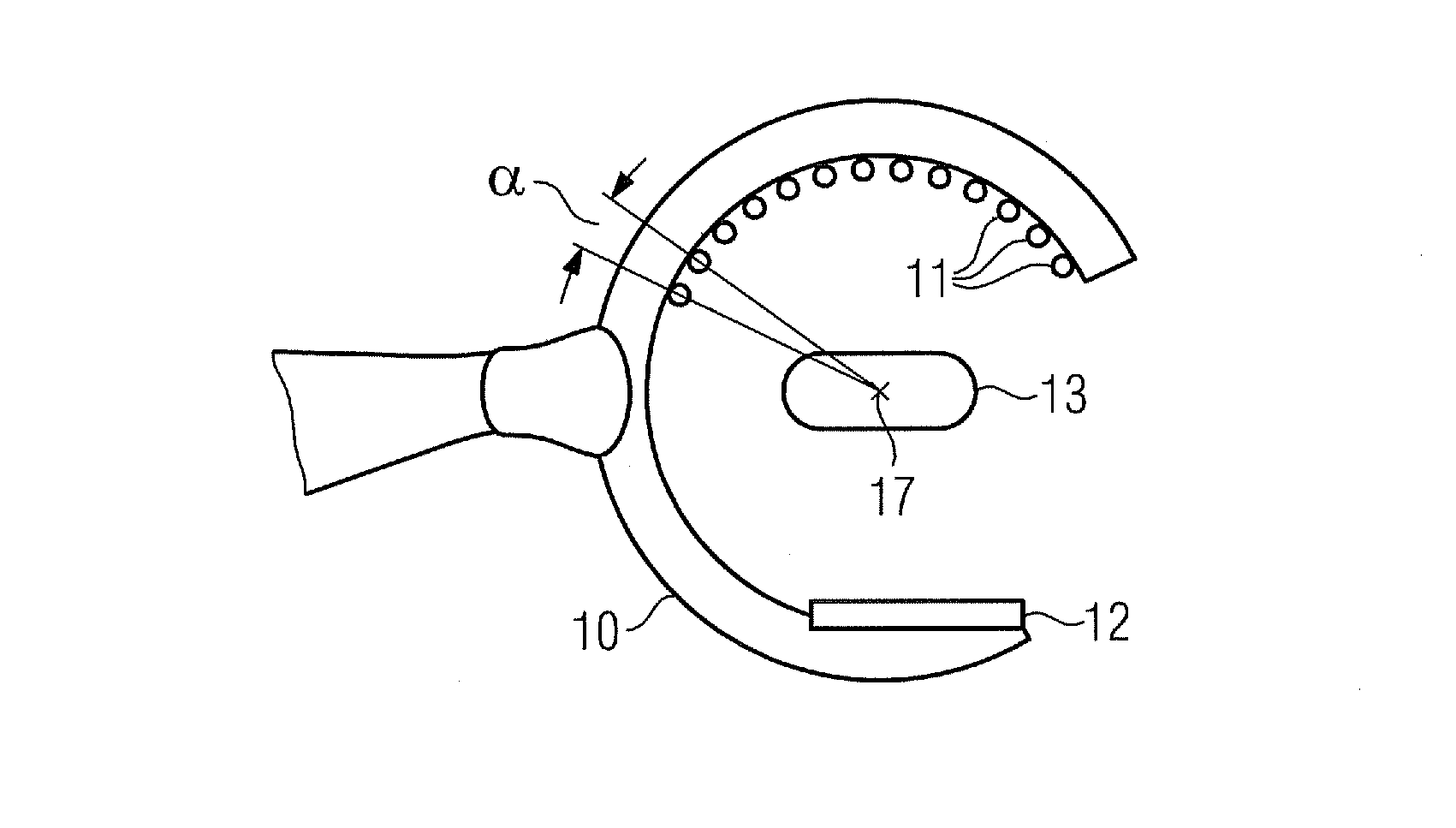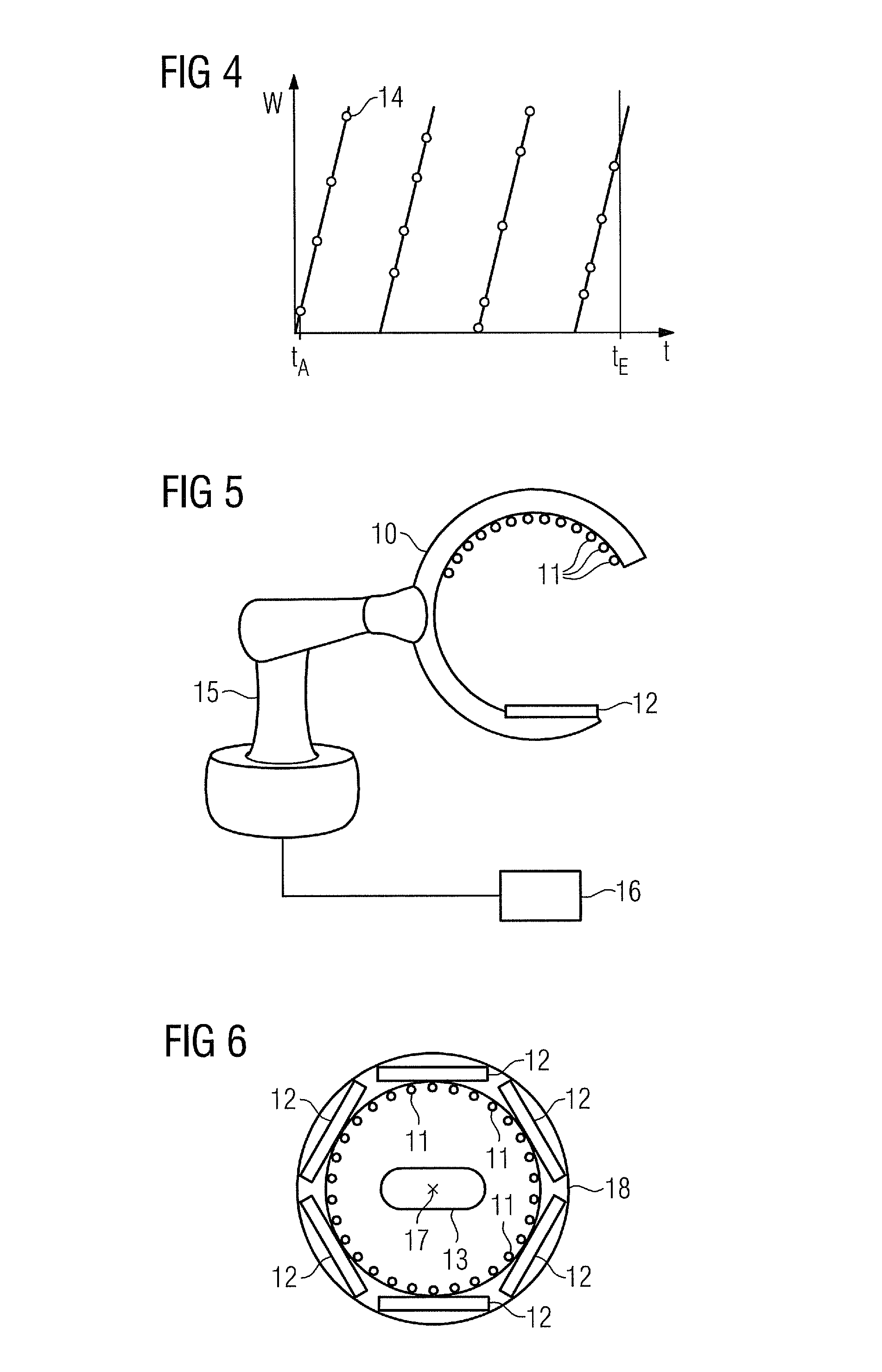Method and device for recording a projection dataset of an object using a plurality of X-ray sources
a technology of x-ray sources and projection datasets, applied in the field of methods for recording projection datasets of objects, can solve the problems of extended recording times and availability of useful reconstruction, and achieve the effect of fast reconstruction and maximum artifact-fr
- Summary
- Abstract
- Description
- Claims
- Application Information
AI Technical Summary
Benefits of technology
Problems solved by technology
Method used
Image
Examples
Embodiment Construction
[0023]FIG. 1 shows a detail from an X-ray system according to the invention having a C-arm 10 on which are mounted an X-ray detector and a plurality of X-ray emitters 11. In this case the X-ray emitters 11 are arranged in the circumferential direction along the C-arm 10 and are spaced apart from one another on average by an angle α relative to an isocenter, for example the center point 17 of the C-arm. The isocenter is a fixed reference point and can be defined, for example, as the point around which the C-arm would rotate if it were to be necessary to perform a mechanical movement for the purpose of recording the projection images from different recording directions. On average, in this context, means that the spacings do not have to match precisely for each X-ray source.
[0024]The X-ray emitters 11 are arranged for example in the form of a linear array on the C-arm and are all aligned in such a way that the X-ray beam generated by them is concentrated on the X-ray detector 12. When...
PUM
| Property | Measurement | Unit |
|---|---|---|
| angle | aaaaa | aaaaa |
| density | aaaaa | aaaaa |
| CT | aaaaa | aaaaa |
Abstract
Description
Claims
Application Information
 Login to View More
Login to View More - R&D
- Intellectual Property
- Life Sciences
- Materials
- Tech Scout
- Unparalleled Data Quality
- Higher Quality Content
- 60% Fewer Hallucinations
Browse by: Latest US Patents, China's latest patents, Technical Efficacy Thesaurus, Application Domain, Technology Topic, Popular Technical Reports.
© 2025 PatSnap. All rights reserved.Legal|Privacy policy|Modern Slavery Act Transparency Statement|Sitemap|About US| Contact US: help@patsnap.com



